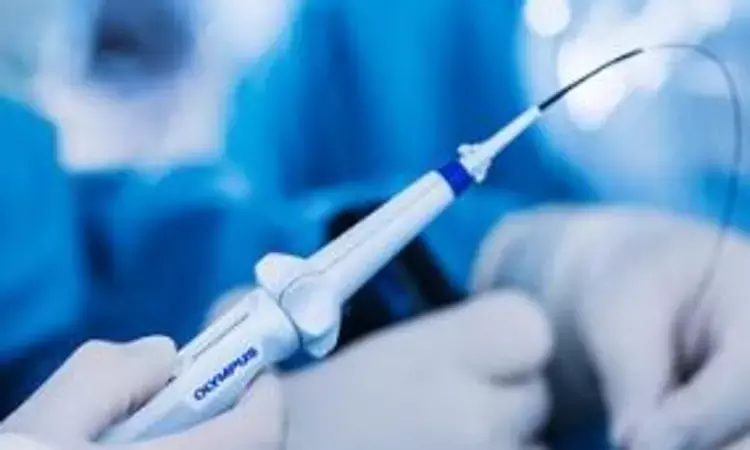- Home
- Medical news & Guidelines
- Anesthesiology
- Cardiology and CTVS
- Critical Care
- Dentistry
- Dermatology
- Diabetes and Endocrinology
- ENT
- Gastroenterology
- Medicine
- Nephrology
- Neurology
- Obstretics-Gynaecology
- Oncology
- Ophthalmology
- Orthopaedics
- Pediatrics-Neonatology
- Psychiatry
- Pulmonology
- Radiology
- Surgery
- Urology
- Laboratory Medicine
- Diet
- Nursing
- Paramedical
- Physiotherapy
- Health news
- Fact Check
- Bone Health Fact Check
- Brain Health Fact Check
- Cancer Related Fact Check
- Child Care Fact Check
- Dental and oral health fact check
- Diabetes and metabolic health fact check
- Diet and Nutrition Fact Check
- Eye and ENT Care Fact Check
- Fitness fact check
- Gut health fact check
- Heart health fact check
- Kidney health fact check
- Medical education fact check
- Men's health fact check
- Respiratory fact check
- Skin and hair care fact check
- Vaccine and Immunization fact check
- Women's health fact check
- AYUSH
- State News
- Andaman and Nicobar Islands
- Andhra Pradesh
- Arunachal Pradesh
- Assam
- Bihar
- Chandigarh
- Chattisgarh
- Dadra and Nagar Haveli
- Daman and Diu
- Delhi
- Goa
- Gujarat
- Haryana
- Himachal Pradesh
- Jammu & Kashmir
- Jharkhand
- Karnataka
- Kerala
- Ladakh
- Lakshadweep
- Madhya Pradesh
- Maharashtra
- Manipur
- Meghalaya
- Mizoram
- Nagaland
- Odisha
- Puducherry
- Punjab
- Rajasthan
- Sikkim
- Tamil Nadu
- Telangana
- Tripura
- Uttar Pradesh
- Uttrakhand
- West Bengal
- Medical Education
- Industry
Single use digital ureteroscope cost effective, functionally equivalent to reusable uteroscopes

Major advances in endoscopic technology has been noted, but there remain benchmark metrics that are required for all endoscopes, including: visual acuity, tip diameter and agility, scope safety, durability and cost. The importance placed on each metric may vary amongst urologists. Improvements in the technology and manufacturing of su-scopes, especially with complementary metal oxide semiconductor camera chips, is improving su-scope image quality and cost control compared to ru-scopes. Additionally, concerns over the environmental impact of a wider utilization of su-scopes have largely been mitigated by a comparative analysis showing that the carbon footprint is equivalent for both su-scopes and ru-scopes. Nevertheless, the historical sentiment that ruscopes provide a better image quality, smaller environmental impact and cost savings still persists today.
Recent research has demonstrated that the Axis single-use digital ureteroscope is equivalent in function to our digital reusable scope and reduced the cost of flexible ureteroscopy.
For the study,researchers conducted a prospective 90-day trial where all flexible ureteroscopic procedures were completed using the single-use ureteroscope. The cases were monitored for scope failure, scope deficiencies and surgeon satisfaction scores via an immediate postoperative REDCap survey. They also performed a cost analysis between reusable scopes and the single-use ureteroscope. The cost of the reusable platform included the amortized initial purchase, maintenance and clean processing.the research report has been put forth in Urology Practice.
Data analysis revealed the following facts.
- Over a 90-day period, we performed 93 flexible ureteroscopy procedures with a single-use
ureteroscope, of which 74 were completed using Axis.
- After controlling for operating room time and disposable items used, the utilization of Axis was associated with an average reduction of $140.31 per case.
- Extrapolating the per-case savings over an annual case volume, we estimate a total savings of
$56,127.15.
- There were no disposable scope malfunctions.
- There were 4 (4.3%) cases converted to reusable scopes due to image quality (1), inadequate secondary deflection (2) and a tight ureter (1).
- MeanSD score for image quality, mobility and ergonomics was 9.11.1, 8.91.1, 9.31.1, respectively. The 90-day complication rates were equal to our controls.
Observing the results the team wrote, 'Single-use ureteroscopes are becoming more commonplace. The adoption of su-scopes has led to concerns over the ballooning disposable costs. Our study demonstrates that over a 90-day trial period a high volume tertiary stone center could successfully convert to 100% su-scope f-URS and significantly reduce cost."
For the full article follow the link: https://doi.org/10.1097/UPJ.0000000000000194
Primary source: Urology Practice
Dr Satabdi Saha (BDS, MDS) is a practicing pediatric dentist with a keen interest in new medical researches and updates. She has completed her BDS from North Bengal Dental College ,Darjeeling. Then she went on to secure an ALL INDIA NEET PG rank and completed her MDS from the first dental college in the country – Dr R. Ahmed Dental College and Hospital. She is currently attached to The Marwari Relief Society Hospital as a consultant along with private practice of 2 years. She has published scientific papers in national and international journals. Her strong passion of sharing knowledge with the medical fraternity has motivated her to be a part of Medical Dialogues.
Dr Kamal Kant Kohli-MBBS, DTCD- a chest specialist with more than 30 years of practice and a flair for writing clinical articles, Dr Kamal Kant Kohli joined Medical Dialogues as a Chief Editor of Medical News. Besides writing articles, as an editor, he proofreads and verifies all the medical content published on Medical Dialogues including those coming from journals, studies,medical conferences,guidelines etc. Email: drkohli@medicaldialogues.in. Contact no. 011-43720751


